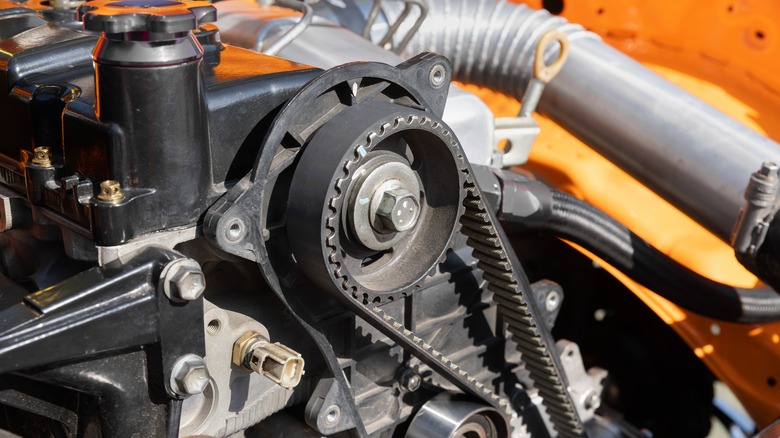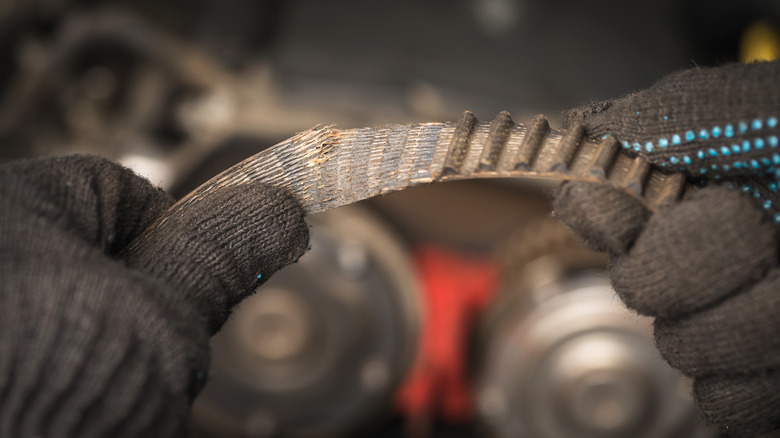The Only Surefire Way To Tell If Your Engine's Timing Belt Is Bad
Every engine has a means of coordinating the timing between the valve train and the rest of the engine. Some engines use a timing chain and some a timing belt. A timing belt has the relatively straightforward task of spinning the camshaft in concert with the crankshaft to ensure the valves are up to snuff. If it isn't working correctly, or outright absent or broken, the engine won't run properly — and in most cases won't run at all. Suffice to say, it's pretty important to make sure your car's timing belt is in good shape.
While it's easy to ascertain the health of your car's serpentine belt — the belt that controls accessories like the alternator, power steering pump, and more — the timing belt is a little more discrete. The vast majority of cars with a timing belt on the engine have it protected behind a cover, and the belt itself often won't let you know that it's going bad, at least in detectable ways while driving. Weird noises, performance issues, or a rough idle can be indicative of a number of different issues, and aren't necessarily indicative of a timing belt failure. However, there is one fool-proof way to ensure your timing belt doesn't give up the ghost while you're driving: Get your hands dirty and look at the belt yourself.
Take a look yourself
Every manufacturer has guidelines in place for how often you should get the timing belt serviced. AutoZone notes that a typical timing belt will last around 70,000 to 90,000 miles, but it's important to check the scheduled service manual of your specific car before determining whether or not it's time for a change. After you pull back the cover, inspect the belt visually to check for defects. Of course, you should only attempt this if you are educated and experienced in the upkeep of cars and engines.
If you're taking a look inside the engine to diagnose any of the aforementioned issues, you can get a fairly definitive "yay" or "nay" on the timing belt by examining the belt's surface. As a component that endures a lot of punishment on a regular basis, the timing belt will probably look a little scuffed by default. What you need to be worried about is if the surface of the belt is covered in large, distinctive cracks or frays.
These kinds of cracks indicate that the belt is being stretched to the limits of its physical capacity, which is diminished by time and physical damage. The biggest red flag is if small chunks of the belt, especially its grip teeth, are completely missing. These chunks are likely sitting somewhere at the bottom of the engine bay, definitely not doing what they're supposed to be doing.

